A Summary of 'How to Lie with Statistics' by Darrell Huff

How to Lie with Statistics was written in 1954 but is even more relevant today than it was at the time of writing. As such it is truly ‘anti-fragile’. This book is great for anyone that wants a refresher on the most common statistical shenanigans that are all around us.
The most important lesson to take away from the book is to always go to the source material when you’re presented with facts & opinions. As such, while this summary will hopefully whet your appetite, there is no substitute for the real thing. Always go to the source material!
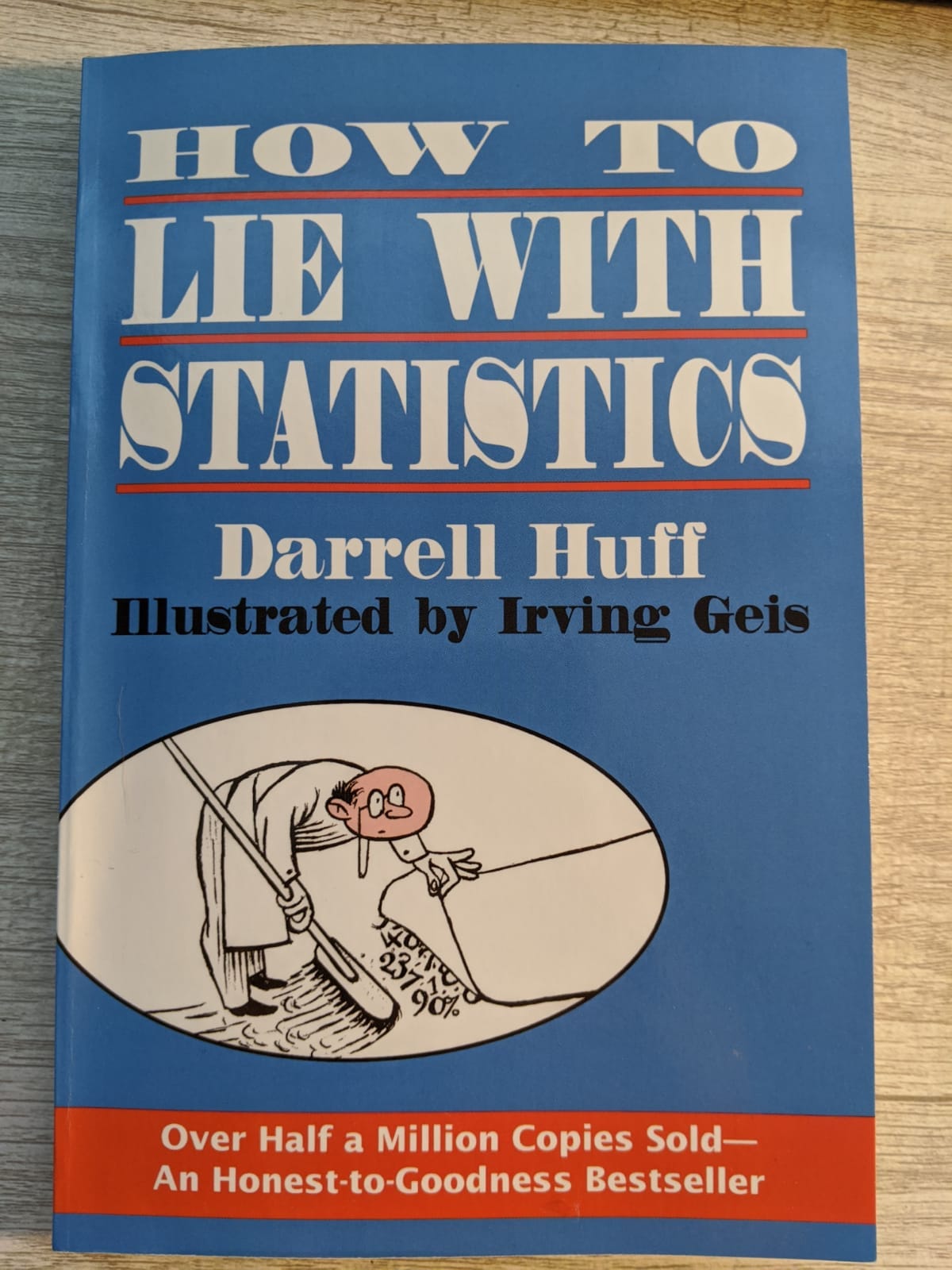
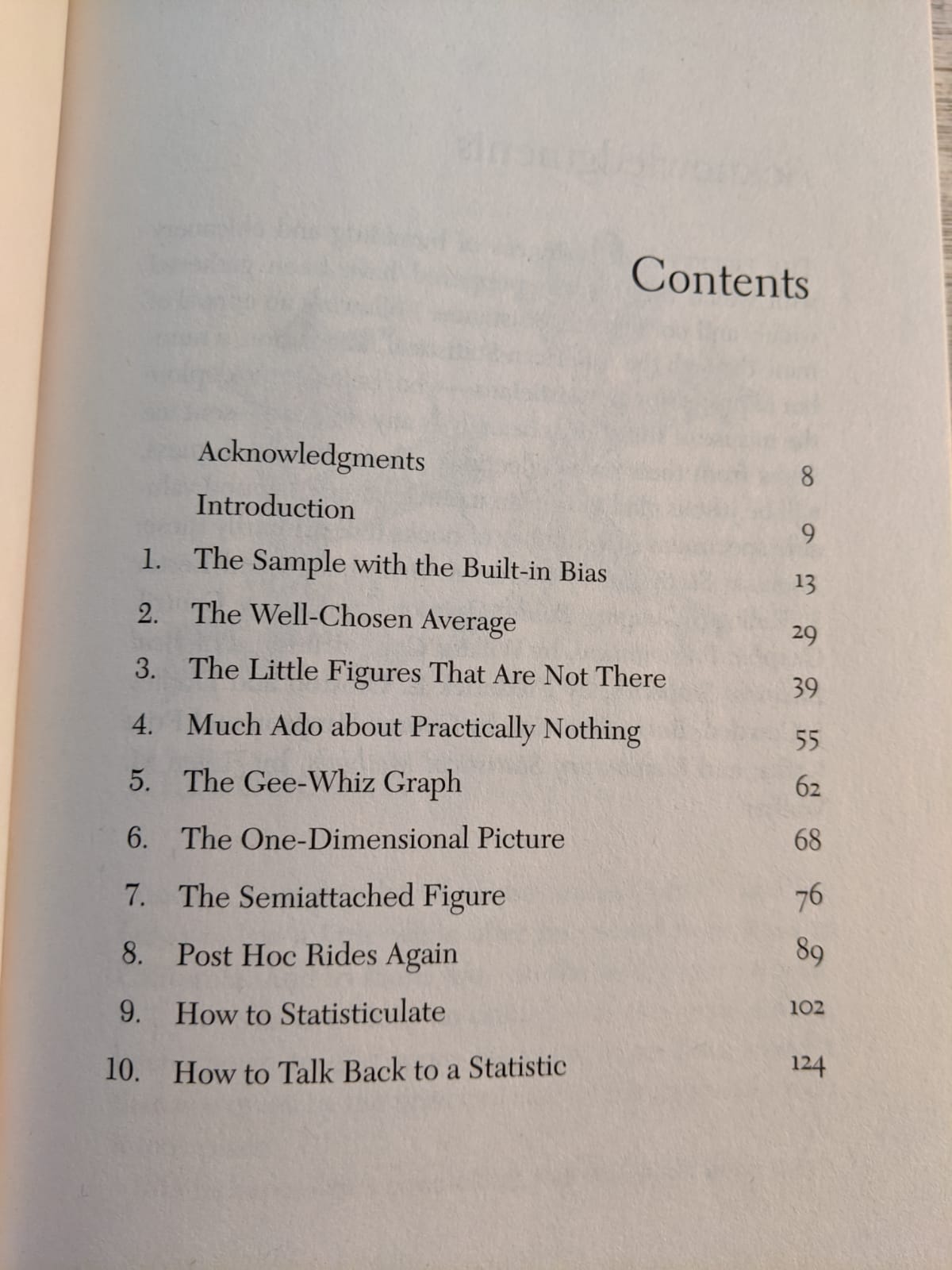
Chapter 1: The Sample with Built-in Bias
Almost every sample has a bias that you need to be aware of in order to draw accurate conclusions. Those that present conclusions of studies will likely not be forthcoming regarding those biases since they want to push their own agenda:
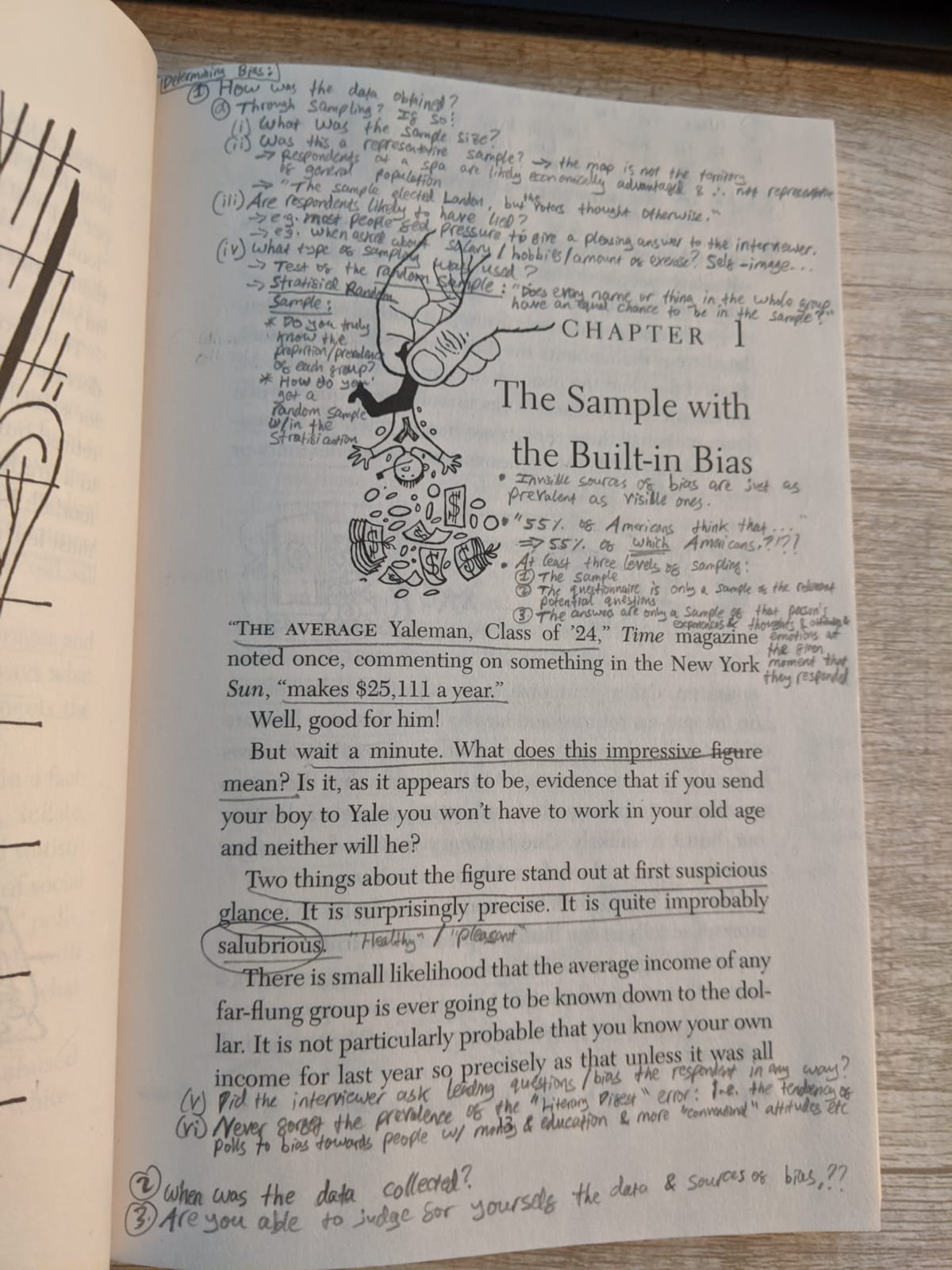
Chapter 2: The Well-Chosen Average
Always ask:
- The average of what?
- Who/what’s included?
- Is the ‘average’ the mean, median, or the mode?
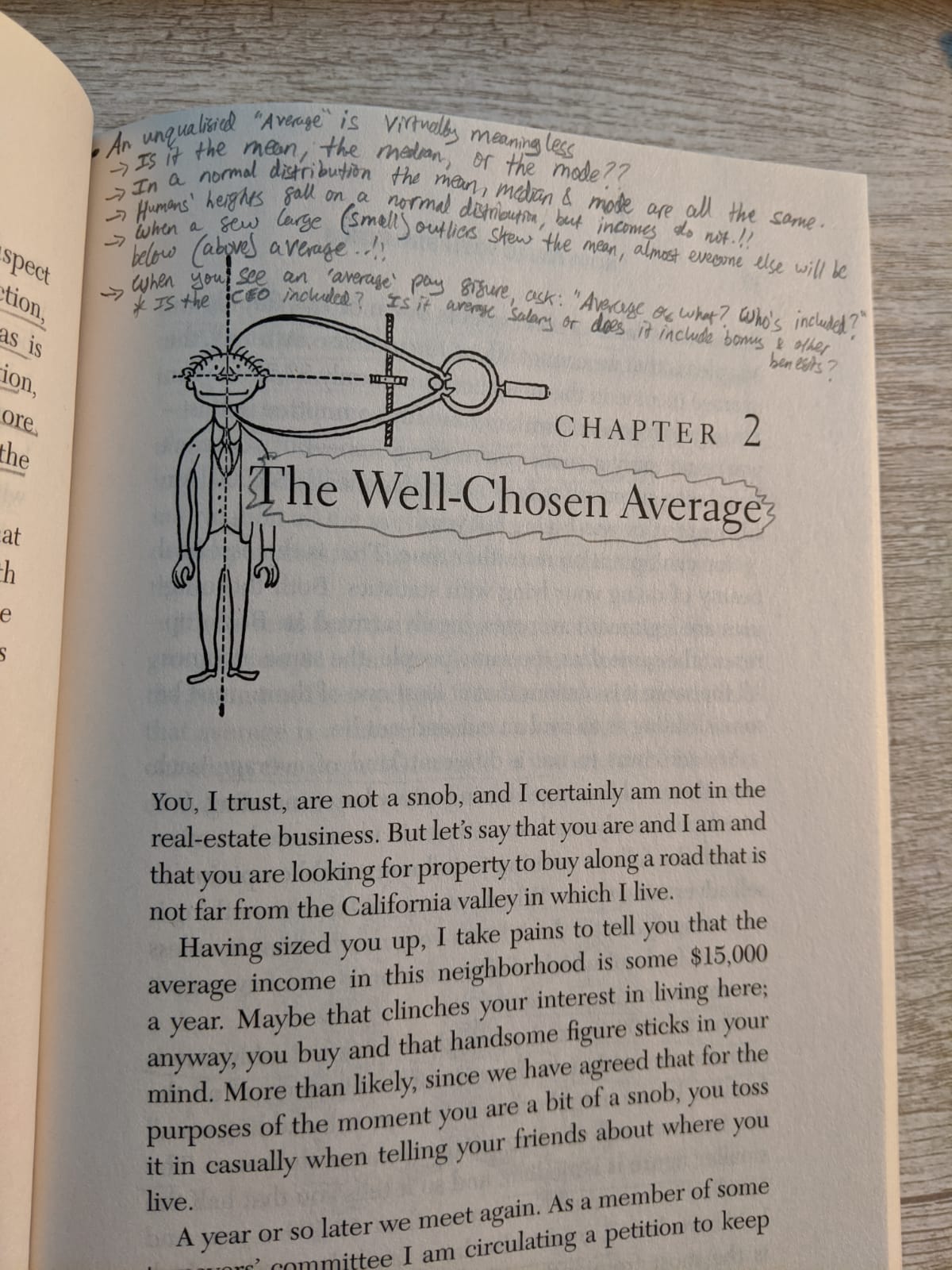
Chapter 3: The Little Figures That Are Not There
Always check for the presence of:
- Sample size,
- p-value,
- Range,
- Quartiles,
- Standard error,
- Standard deviation, etc.
If these figures aren’t provided in an article (they probably won’t be), then go to the source material and look for them there. They tell you incredibly useful things about the underlying data that will help inform your own conclusions about a study.
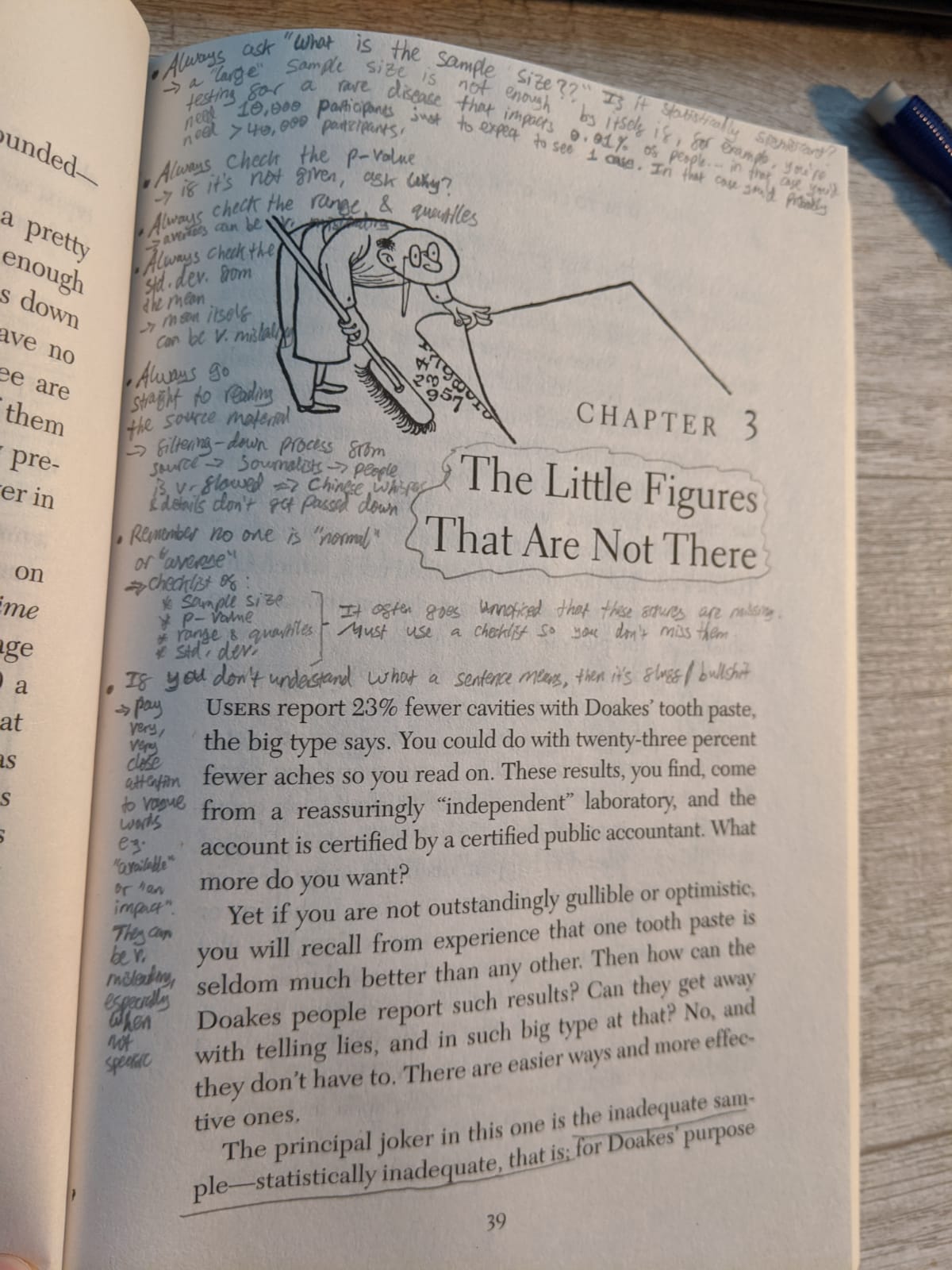
Chapter 4: Much Ado about Practically Nothing
Remember the importance of standard error and always keep the ‘plus-or-minus’ in mind…

Chapter 5: The Gee-Whiz Graph
The author of a chart is probably misleading you with the axis.
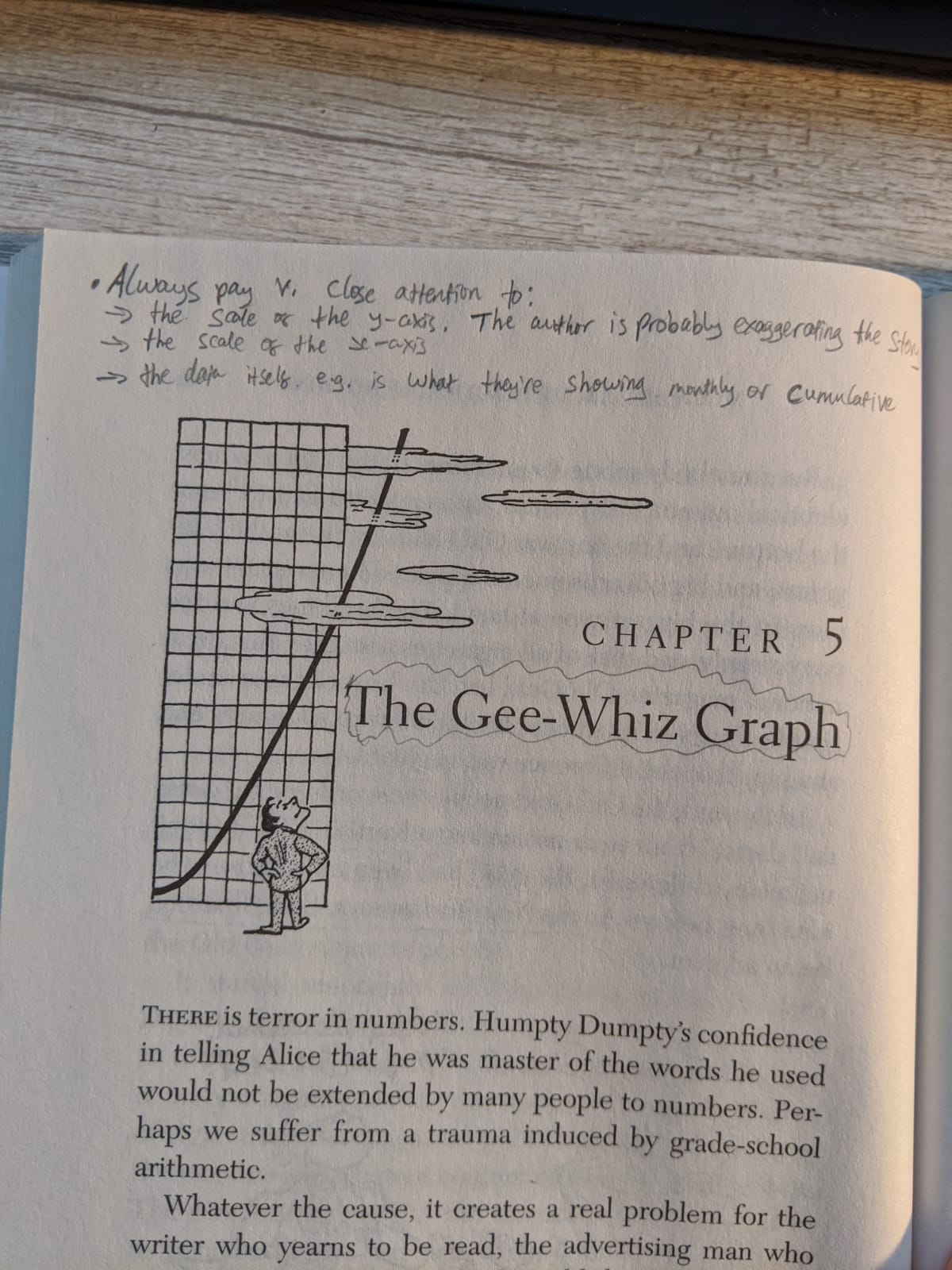
Chapter 7: The Semiattached Figure
Absolute changes are somewhat meaningless without ascertaining what is the percentage increase or decrease.
Always question if one result is being used to infer something else that doesn’t necessarily follow.
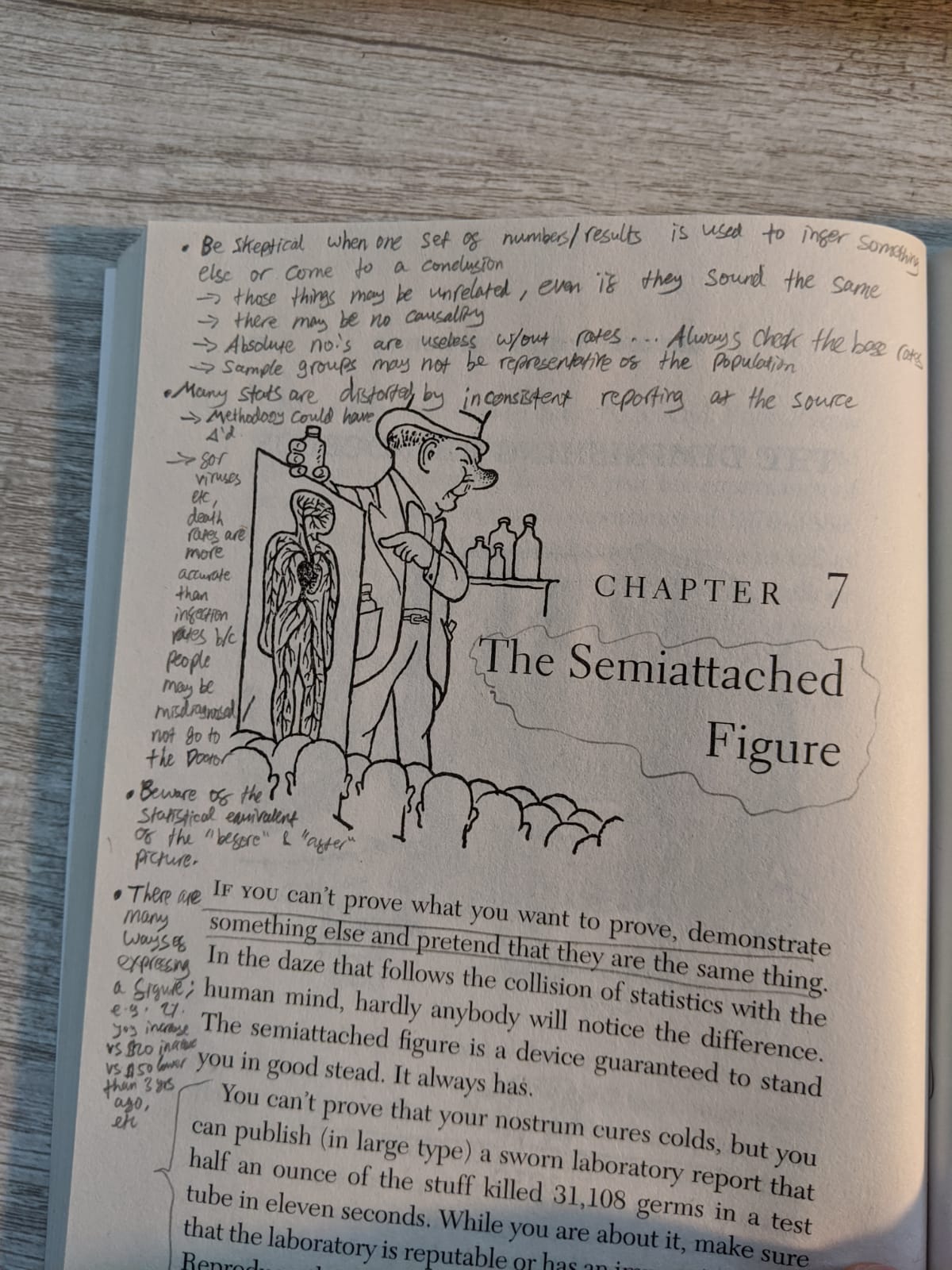
Chapter 8: Post Hoc Rides Again
Correlation does not imply causation…!!

Chapter 9: How to Statisticulate
Never take a statistic at face value – everyone has a bias, so go to the source material.
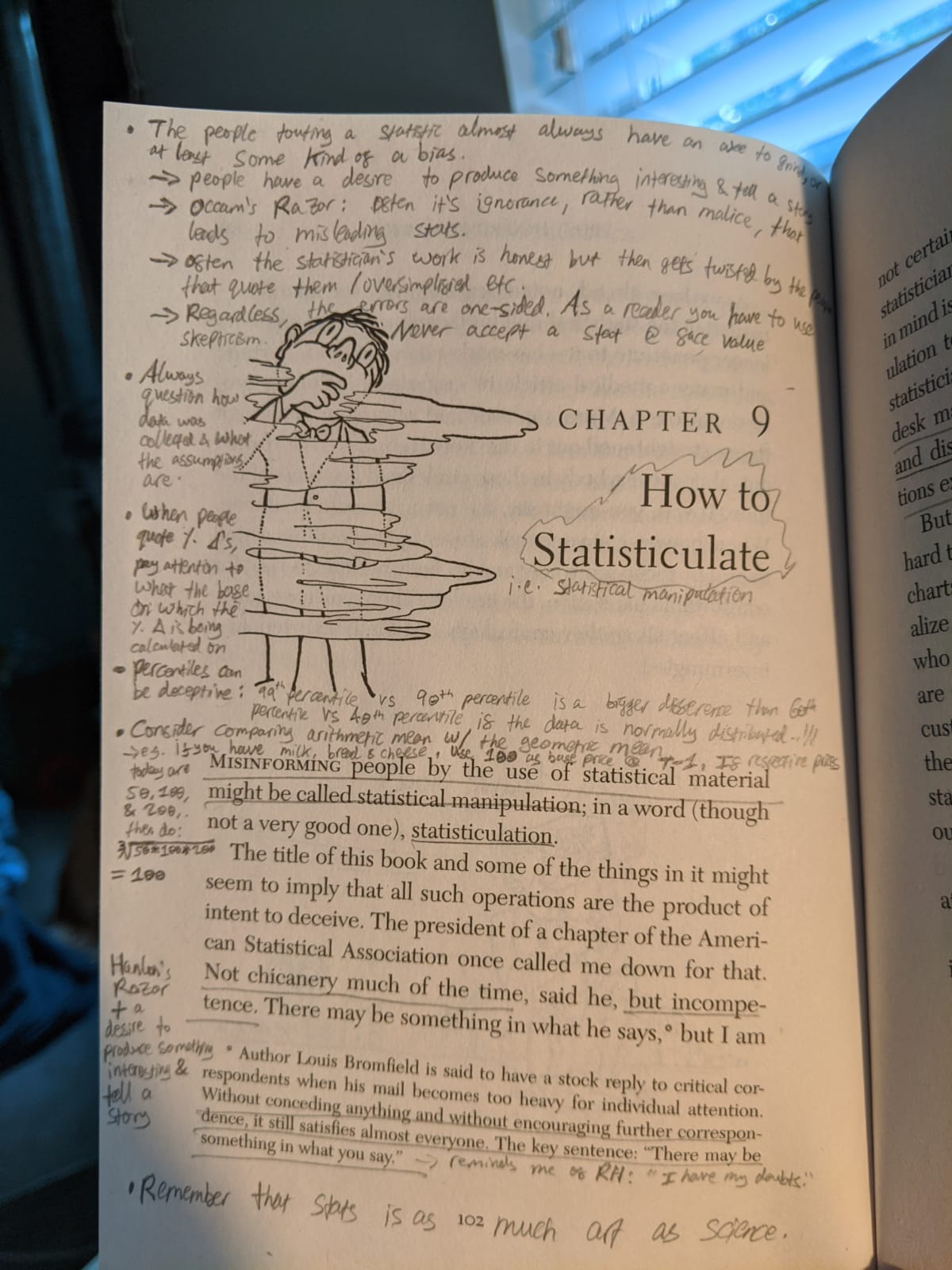
Chapter 10: How to Talk Back to a Statistic
Always ask:
- Who says so?
- How does he/she know?
- What’s missing?
- Did somebody change the subject?
- Most importantly: Does it make sense?
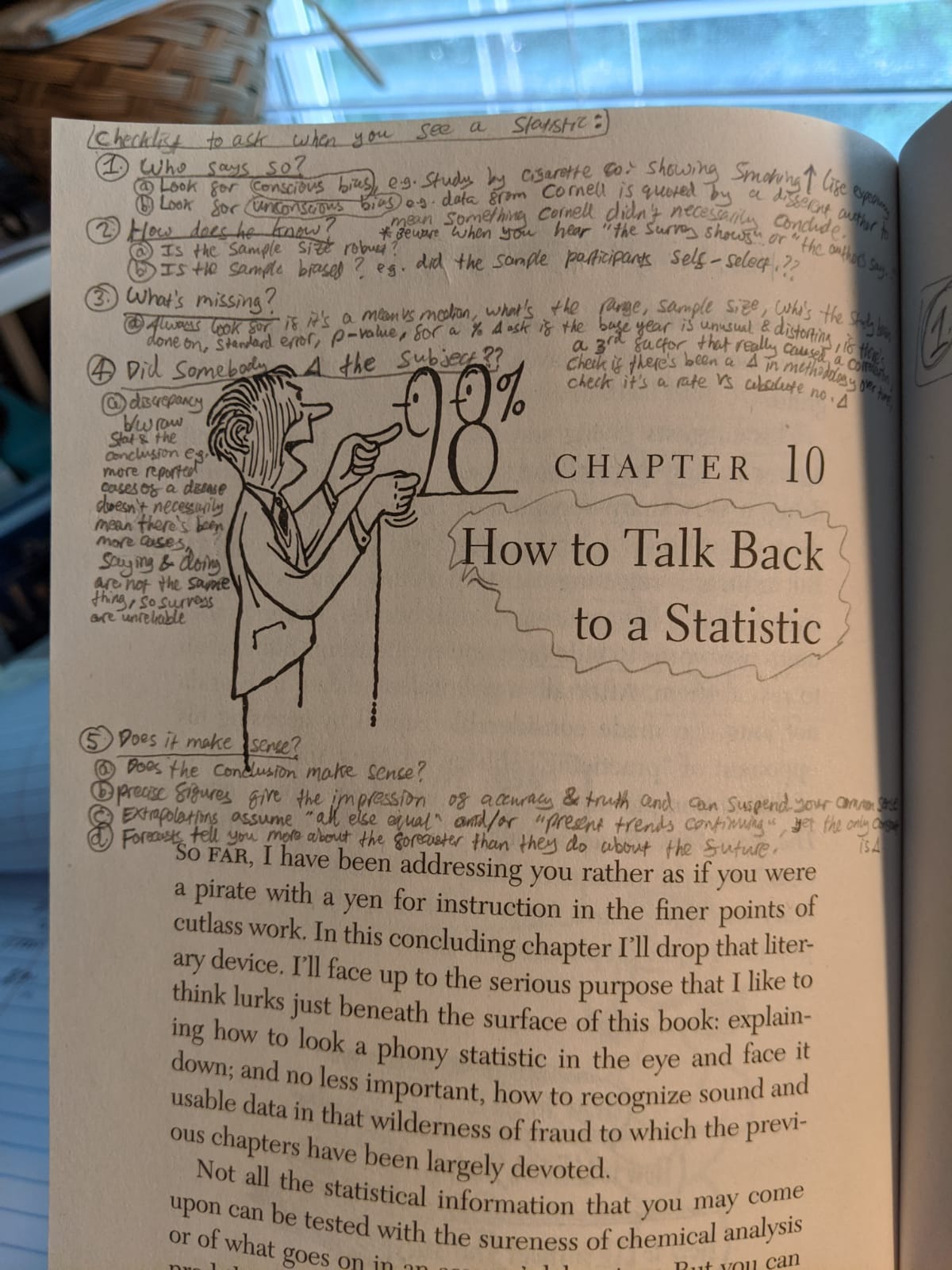
If you’ve enjoyed this book summary, order the book online! It’s a short, easy read.
Finally, for those wondering why I do book summaries like this, I am not really sure why. All I can say is that me taking notes on a book like this is the greatest endorsement that I can give to a book. If I haven’t taken notes like this for a book, it probably means I didn’t enjoy it that much or don’t think that its lessons will stand the test of time.
